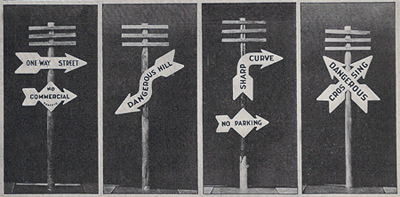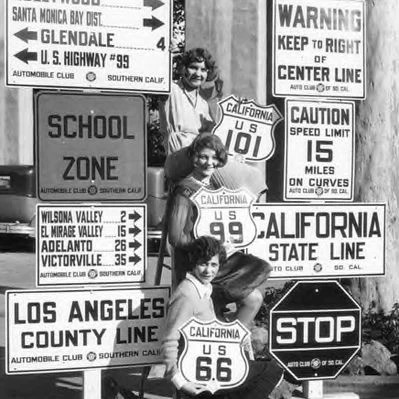Do you often see many traffic signs every day, and wonder how they started? Actually, these simple boards play a powerful role to keep us safe. The journey of traffic signs began from Ancient Rome.
They introduced stone pillars, and after that, smart and digital signs came into the market. Their evolution tells us how humans learned to travel and protect each other. It’s a history written not in books but on the roads where we drive every day.
Evolution of Traffic Signs
Today, there are more than 600 traffic signs. It’s not an easy task to learn all of them. But before you try to understand them, let’s look at how they basically started. Moreover, you will also see how traffic signs became what we see on roads now.

Beginning in the Roman Empire
The origin of traffic signs dates back to ancient times. Basically, it started from the beginning of the Roman Empire. At that time, they were using stones as a marker of traffic signs.
These stones inform the travelers, how much distance they have covered. They also used to guide in which direction drivers should go next. The information about road work and the ruler of that time was also mentioned on the stones. For instance, Milliarium Aureum (milestone or gold milestone) represents the starting point on all Roman roads.
The 1773 Legislative Act
After that, a major change appeared in the traditional signs as a legislative act. This act was passed by the British Parliament. These signs were known as fingerposts. If we observe the structure, they have arm-type boards pointing in different directions to show travelers which way to nearby towns. And how much distance have they completed?
Developments in the 19th Century
In the 1800s, bicycles became very popular. The riders demanded for clearer road signs to find their way. Many cycling groups worked for it, for instance, the Touring Club put up wooden signs pointing to nearby towns. This time period helped traffic signs become useful as well as important for both direction and safety.
The Birth of Modern Traffic Signs
When cars started becoming common, in the late 1800s and early 1900s. This thing became clear that proper traffic signs are needed everywhere. In 1909, a meeting in Paris introduced the first international road sign system.
At that time, the shapes and colors were also started. For instance, red color for danger and stop. Different types of shapes were introduced with several codes written on them. For example, The first stop sign was used in Detroit in 1915. This sign was small, white, rectangular & had black letters that said “STOP”.
1930s: Reflective Road Markings
In the 1930s, advancements in materials led to the introduction of today’s reflective road markings. In 1937, a 3M employee Harry Heltzer developed a method for creating reflective center lines on roads.
Basically, he used glass beads for this purpose. This innovation improved night time visibility. Moreover, this innovation set the stage for upcoming technologies like electronic and digital boards.
What did Early Traffic Signs Look Like?
Early traffic signs were very simple because they were just the stone markers. They represented the covered distance or remaining miles. Later, wooden signs with arrows were used to point to nearby towns. In the 1800s, black and white signs became more common.
After that, In 1909 the picture signs were made for all. That became more understandable for everyone. By 1923, the red octagon “stop” sign was introduced. As you know, today’s modern signs are colorful, reflective and easy to read.

Initial Shapes of Traffic Signs
Mississippi Valley Association of State Highway Departments had a detailed discussion in 1923 to decide specific shapes for several situations.
- Octagon: This was used as an indication to stop.
- Square: For careful driving at some events.
- Star: Famous for marking big highway roads.
- Round: To give a warning to people when they cross a railroad.
- Rectangle: For telling about directions
- Diamond: To convey the message of special precautions in particular regions

Standardization of Traffic Signs By Legal Authorities
As you know, cars became faster and more common. That’s why traffic signs also became more important. Different designs in different areas and countries caused confusion. This thing urged authorities to make signs uniform.
Manual on Uniform Traffic Control Devices (MUTCD): The MUTCD published the 1st documented manual in 1935 in the United States. This article, set common rules for road signs, signals and markings in all over the states. It is still the main guide for U.S. road signage today.
Vienna Convention of 1968: The Vienna Convention created a global system for uniform road signs. Additionally, they introduced pictograms like triangular warning signs and circular regulatory signs that are understood worldwide.
After that, all the states agreed on standardised forms of signs, boards and signals. If you observe right now almost all the countries are working with the same strategy. In some particular conditions a few countries with advanced tech systems follow special sign boards and regulations.
Conclusion
At last we can say that, traffic signs covered a long journey from stones to smart boards. Next time, if you are on the road, you can see them and understand their meanings. They are our silent protectors. As the travel industry gets faster, signs will also get smarter. But their job will always be the same: to keep us safe.


-80x69.png)

